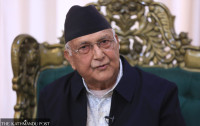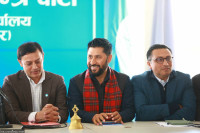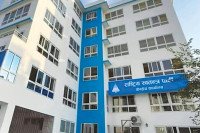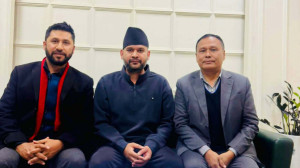Politics
UML kicks off election campaign in Darchula on nationalist plank
KP Oli’s address suggests his party will make every effort to cash in on the new Nepal map in the elections.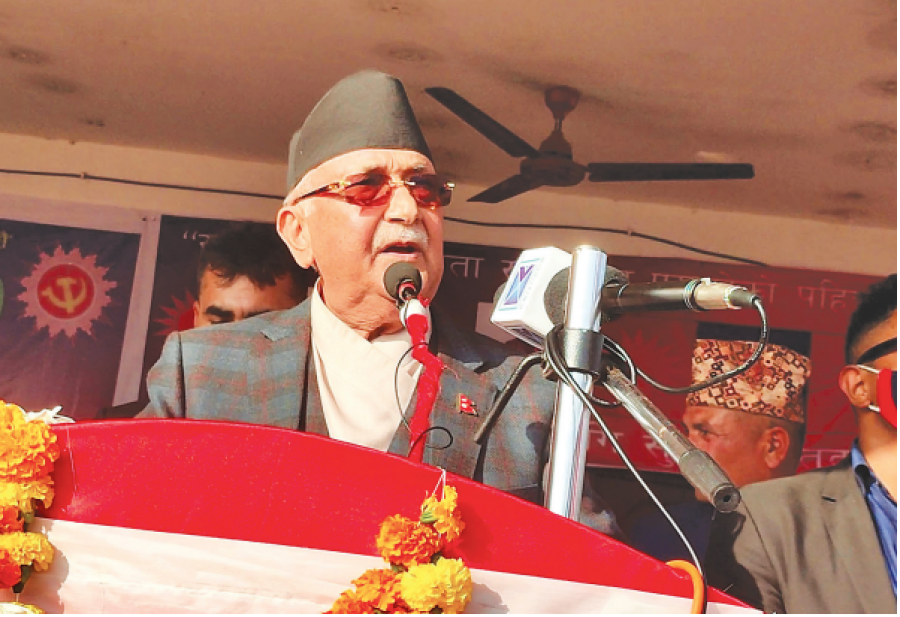
Binod Ghimire
On Friday, the CPN-UML officially launched its election campaign for parliamentary and provincial polls from Darchula district by holding its first canvassing rally. The selection of the area, which lies in the country’s northwestern corner, was well thought out.
On June 9, 2020 the Parliament unanimously endorsed a bill to revise the Constitution of Nepal to update the country’s political map. The then KP Sharma Oli Cabinet on May 2o of the same year had issued a new administrative map of the country incorporating Limpiyadhura, Lipulekh and Kalapani, which are currently under Indian control. The constitution amendment bill to this effect was registered in Parliament two days later, on May 22, by the Oli administration.
Oli’s move was a tit-for-tat response to India after Delhi unilaterally issued a new Indian map by incorporating the three areas within its border.
The areas are officially part of Darchula district. By commencing its election campaign from the district, the UML has given the message that it wants to contest the upcoming elections on a nationalistic plank.
Oli’s address to the mass on Friday indicates that his party will make every attempt to cash in on the new Nepal map in the elections. “We won’t allow a single inch of our land to be encroached upon,” Oli told the rally. “We issued the national map [incorporating the Kalapani area]. The Parliament endorsed it unanimously. I am here to guarantee that [the area returns to Nepal].”
The country was reeling under an Indian blockade in the aftermath of the promulgation of the Constitution of Nepal when Oli became prime minister for the first time in October 2015. He was vocal against the blockade while the UML’s rival party Nepali Congress, for a long time, refrained from using the word ‘blockade’.
As prime minister, Oli refused to visit India until the blockade was lifted. The Indian blockade had added pain to millions of Nepalis who were yet to overcome the suffering from the 2015 mega-earthquake.
His firm stance against the Indian blockade helped him be popular as a nationalist voice. That paid the party well in the elections of all three tiers of governments held in 2017. The UML didn’t just emerge as the largest party but its left alliance with the Maoist Centre garnered close to a two-thirds majority in the House of Representatives. Also, the alliance had a comfortable majority in six of the seven provinces.
Now the party wants to sail on the same nationalist ship in the federal and provincial elections slated for later this month.
“We had to start our election campaign from somewhere. We chose Darchula because we have a border dispute [with India] there. The locals were also demanding that the UML start its campaign there,” Bishnu Rimal, the party’s deputy general secretary, told the Post. “They have showered huge support on the party. The sun [the party’s election symbol] rose from the west on Friday.”
Political experts, however, say the Oli-led immediate past government had a huge opportunity to perform and make good on the promises made to the public, but it completely failed. They claim the party doesn’t have any other agenda than nationalism this time.
“However, the UML’s nationalist agenda has become stale now and is not going to pull significant votes for the party,” Uddhab Pyakurel, who teaches political sociology at Kathmandu University, told the Post. “People have seen how Oli invited the chief of RAW [Research and Analysis Wing, India’s external intelligence agency] to his official residence in Baluwatar at midnight when his government landed in a crisis.”
Samant Kumar Goel, RAW chief, was treated to the red carpet in Baluwatar by Oli in October 2020 in an attempt to mend ties with India that had soured after the release of the new map. Many criticised the move as Oli’s double-standard.
“Oli doesn’t walk the talk. While he makes big public remarks against India, we have seen him surrender before the southern neighbour on several occasions,” Bhaskar Gautam, a political commentator, told the Post. “I don’t think a conscious Nepali will buy the UML’s agenda of narrow nationalism this time. If they did, it would be unfortunate for the country.”
Oli was in power for around three and a half years, one of the longest tenures any Nepali prime minister has enjoyed after 1990, yet his government couldn’t do anything remarkable to fulfil its pledges from the previous elections, according to political experts. As a result, it is making attempts to cash in on the new map. In their view, people stood with the UML in earlier elections as the party was in the government briefly and it had not been fully tested.
However, the situation this time is different as the party has already been proven a failure owing to its poor service-delivery. Pyakurel said Oli was in power for over a year ever after the adoption of the new political map but his government did little to claim the land.
“We saw how Oli stopped the publication of the new Nepal map in the school textbooks,” he said. “Nepal has taken back the disputed land, but only on paper.”




 12.91°C Kathmandu
12.91°C Kathmandu

